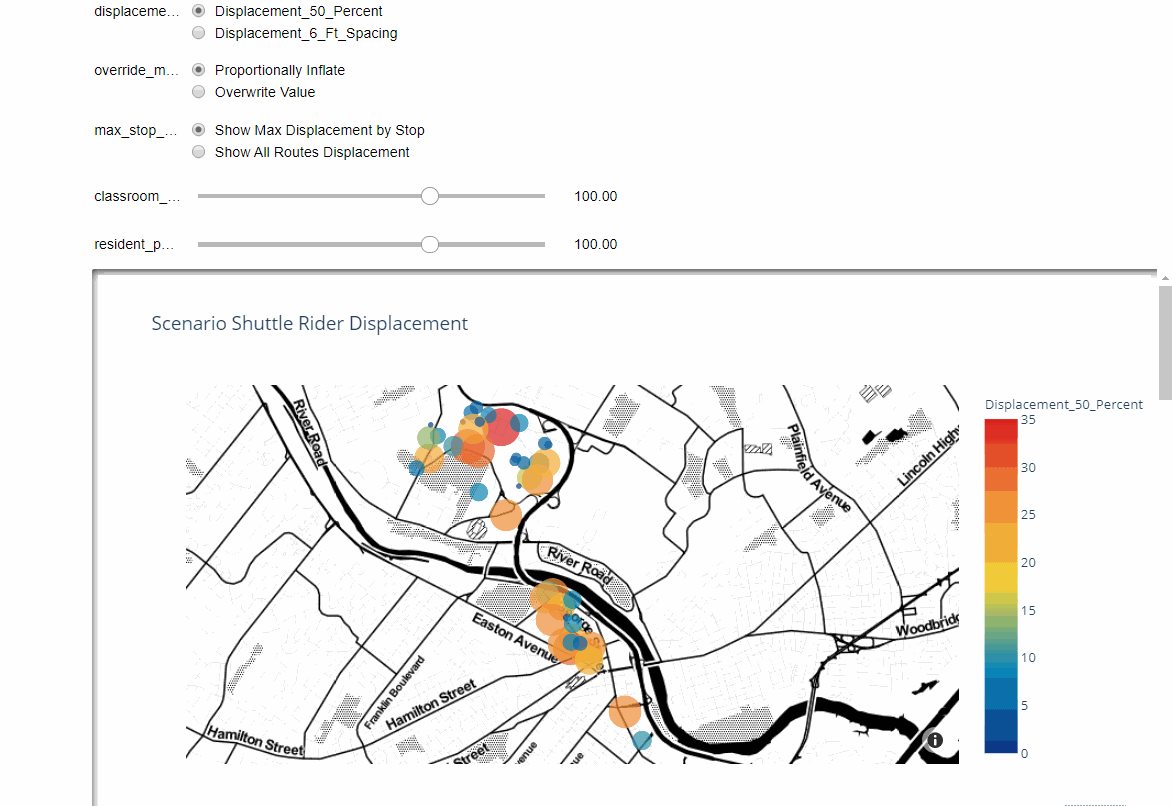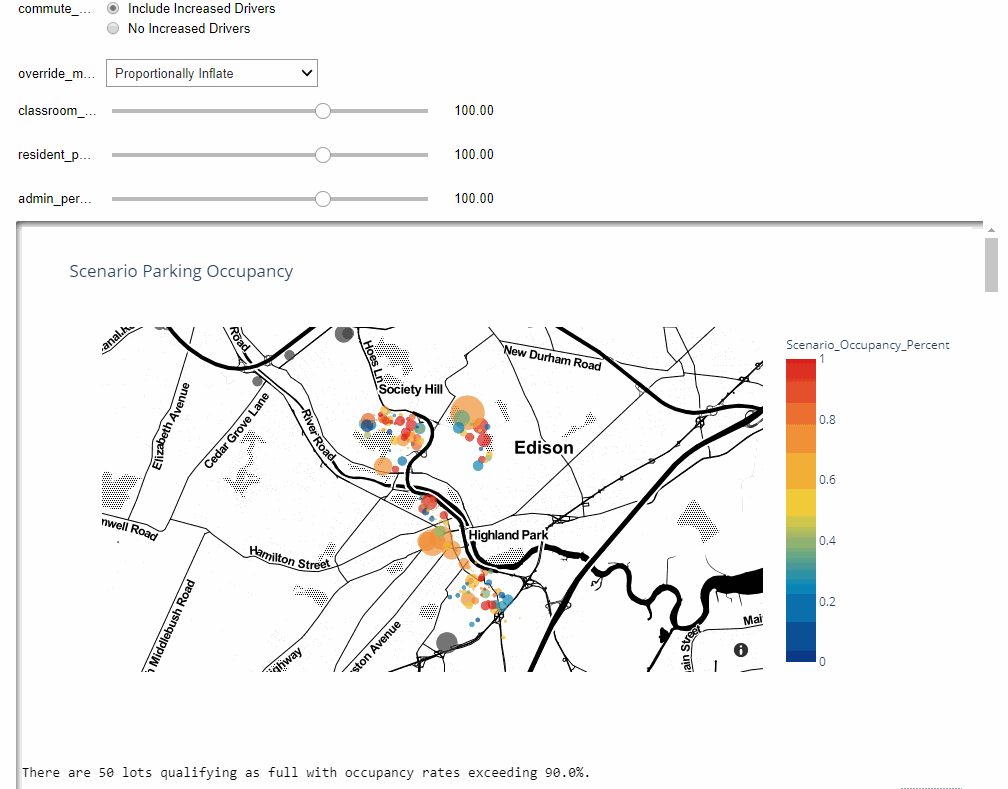The Road to Reopening
Planning Parking & Shuttle Service for Rutgers University Amid COVID-19
The COVID-19 pandemic has changed travel in many ways, and is raising new questions as universities, colleges, and schools prepare to resume classes. Rutgers University operates the largest private shuttle system in the US, and can only load shuttles to 50% capacity based on the New Jersey Governor’s social distancing directive. With anticipated changes in the ways university communities will access campus services, travel to/from campus, and move within campuses/between districts in the wake of this uncertain time, Rutgers University needed a plan to reopen safely.
Partnering with Brailsford & Dunlavey on the project, Fehr & Peers DC developed the Transportation Demand Stress Test Tool, combining nearly a dozen different data sources, including registrar data, StreetLight Data, building inventory, shuttle boardings and alightings, parking inventory and occupancy, and mode surveys to develop a tool that predicts building activity shuttle loads and parking demand, allowing Rutgers to plan data-driven solutions.
The development of the tool and plan involved multiple strategic approaches.
- Using Data to Gain Insight. The tool uses anonymized class schedule and building database information to generate Monday-Saturday full-day building activity. The analysis and resulting granular operational recommendations were focused not only on access to the Rutgers campuses/districts, but also on building-to-building movement of people, providing for a comprehensive study (click here to view).
- Scenario Testing. The Transportation Demand Stress Test Tool accepts inputs, such as planned class schedule, to forecast active mode, shuttle, and parking demand. Sliders allowing real-time adjustments to on-site students, faculty/staff, and dorm residents provide quick responses on shuttle and parking utilization. The tool contains toggles to adjust mode share to assume that more people will choose to use modes that allow social distancing.
- Meeting a Tight Timeline. With classes beginning on September 3 at Rutgers, there was an essential short window of only a month to complete the process in time for translating the plans into practice. The project is wrapping up now, and implementation is beginning in preparation for the safe start of classes.
The images below provide a deeper dive into the project’s analysis.
Scenario Analysis
The scenario-oriented shuttle analysis tool leverages Rutgers’ classroom schedule and building database to estimate how changes in building activity during a reopening scenario could influence demand. This shuttle demand analysis enables the dynamic evaluation of different capacity constraints on the shuttle system and estimates the number of displaced riders that would result from different assumptions (a 50% reduction in transit capacity or the maintenance of 6 feet in social distancing).
This project is one example of the changing needs we are seeing from our clients and communities due to the COVID-19 era and beyond. By working collaboratively with various departments and interests at Rutgers University, we were better able to help our client adapt to changes in travel behavior and planning for the additional safety and distancing needs that have become essential.
Learn more about our Rutgers project by contacting Matthew Ridgway at Fehr & Peers DC or James Vigil at Brailsford & Dunlavey. Interested in the other ways we are pivoting our project work and research and development to meet the changing needs of our clients and communities? Contact our experts today.



